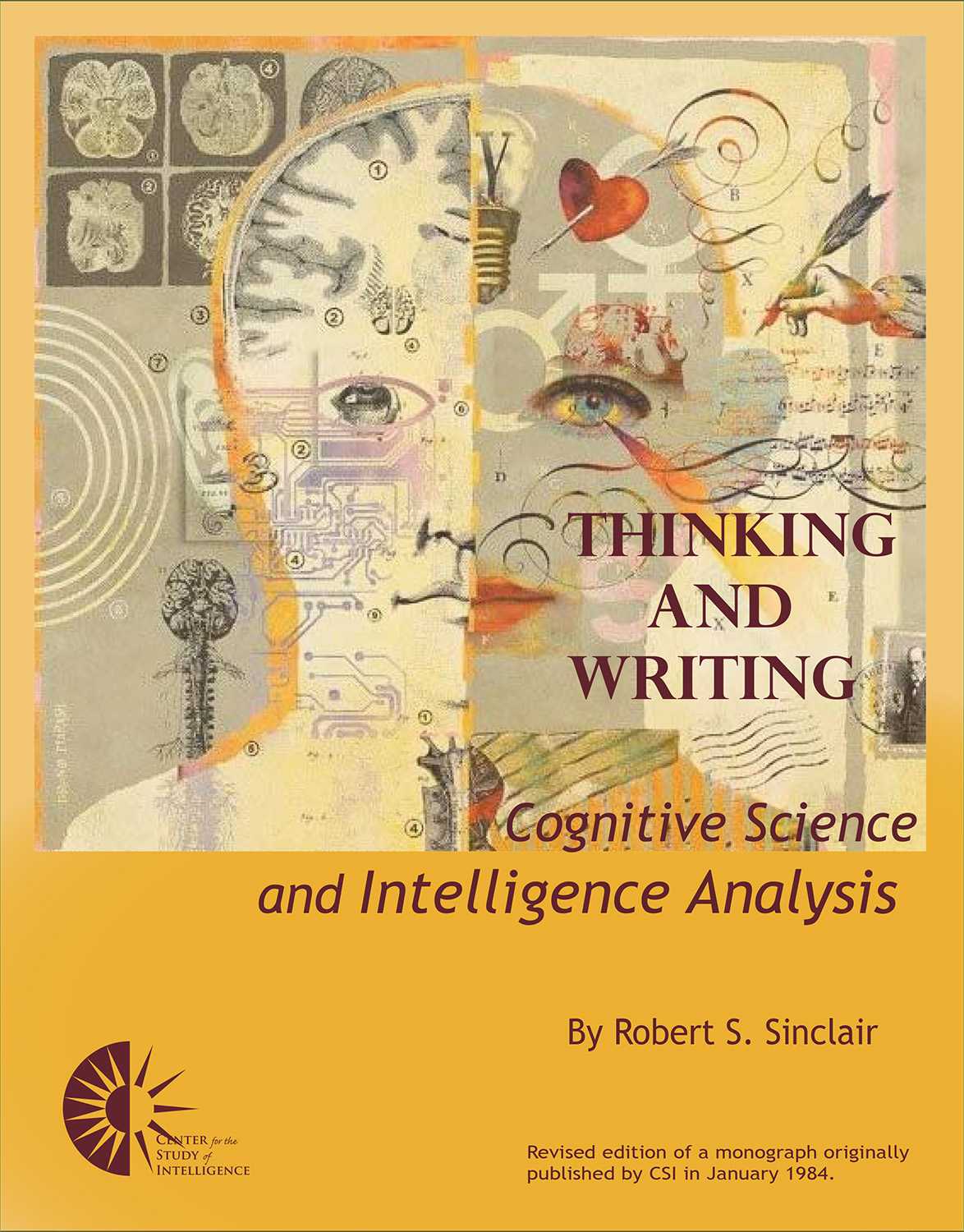This study was originally prepared by Robert S. Sinclair during a fellowship with the Center for the Study of Intelligence (CSI) in 1984. It has been updated with a new introduction and slightly edited. Robert Sinclair was a CIA intelligence analyst for 37 years.
Author Introduction and Update
When this monograph was published a quarter-century ago, it sank virtually without a trace. It is clear to me now that the paper lacked what today would be called “curb appeal”; moreover, cognitive science was a new and unproven discipline. Then, few inside or outside the intelligence world were aware of it, and even fewer had thought about its relevance to intelligence analysis. The field has opened up to a stunning degree since then. Not only have we seen a flood of studies documenting the myriad cognitive activities our brains engage in, but electronic imaging allows us to observe what happens in the brain as it goes about its business.
Authors like Malcolm Gladwell have mined the literature to show the insights these processes can produce, as well as the times they leave us stuck in unproductive ways of thinking. In Blink: The Power of Thinking Without Thinking, Gladwell reports that when experts were asked to assess the provenance of an allegedly ancient sculpture, they could agree that it was a fake but could not put into words how they had reached that conclusion. One exception was Richards J. Heuer, whose articles, published in Studies in Intelligence beginning in 1978, helped trigger my own interest in the field. The Center for the Study of Intelligence published an updated version of Heuer’s articles in the book Psychology of Intelligence Analysis in 1999. Since reprinted by CIA and posted here in CSI’s web collection, the book is now a staple in many analytic training courses. This and other examples, Heuer says, illustrate how the things we learn through experience often are not readily available to our conscious minds. . . .
. . . Since I wrote the monograph, however, I have nurtured an idea that I think would move our analysis well beyond these accomplishments. The monograph is not terribly clear on this point since I still was laboring to articulate the idea; but as far back as 1984, I was sure that electronic interaction was the wave of the future for DI analysis. More specifically, I thought the time was at hand when we would be producing finished intelligence not just online but collaboratively.
—Robert S. Sinclair
February 2010
To continue reading "Thinking and Writing" download complete PDF (41 pages)
